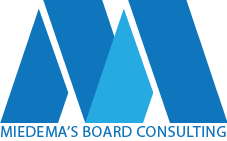As written for Imagine Canada at http://www.imaginecanada.ca/blog/board-recruitment-and-selection
Board member recruitment and selection is the key to getting a great team of effective people around the board table. Since board members are the ones that hire and manage the CEO, they ultimately determine the culture and effectiveness of the organization with impact that will outlast their years of board service.
To be effective and fulfill their fiduciary duties, boards need to have diversity of thought and perspective around the table. Just as each person has a frame of reference they see the world through, the goal of board recruitment and selection should be to increase that frame as much as possible by bringing in people with different skills and perspectives. Imagine Canada Standards Program Accreditation looks for evidence of this in criteria E4, which states that, “volunteer recruitment incorporates internal and external strategies to reach out to and involve a diverse volunteer base.” Diversity involves a wide range of qualities which is why the recruitment stage is so important.
Recruitment
The recruitment stage starts with an assessment of what the board needs and what it has. This is an important step to get right and to review regularly since it will impact other decisions along the way. The assessment is usually done by making a list of the skills, experiences, demographics and/or qualities that are needed by the board to govern well and then determining how many of the attributes each board member has. It is also helpful to set the ideal range of how many board members should have any given attribute. For example, one target that is often focused on today is gender representation. Boards should decide in advance what the ideal gender representation should be on the board and then be intentional about building to or maintaining that number.
When developing the recruiting list, engage caution in recruiting board members for the sole purpose of accessing big fundraising networks or free services (e.g. legal, accounting, marketing). Board service is not automatically the best way to engage those volunteers and can lead to confusion between operational decisions and governance decisions. If possible, it is better to engage these individuals as advisors or through task forces, advisory councils or some other role that recognizes their valuable contribution while saving the board seats for volunteers that are a great fit for the board and willing to dig into the work of board governance.
Once the recruiting list is developed, take a step back every few years and assess whether or not it is still appropriate. As an organization grows or changes, the ideal board composition may change as well. Imagine Canada’s criteria state that the board needs to have a process to annually review plans for succession to the positions of a board chair and committee chairs. Keep the focus out at least three years and have backups in the queue so that gaps can be identified and planned for well enough in advance to allow for recruiting, training and development.
Once the Governance or Nominating Committee has determined the current and potential future gaps on the board, it is ready to start recruiting. Since it now knows the very specific type of person or skill set it is looking for, the board can focus its search in the same way the organization would recruit paid staff. Some organizations now include a board member “job posting” on their website and recruit via social media to reach new talent. The job posting spells out the expectations of being a board member and outlines specifics, including the time commitment and frequency of meetings. In addition to providing valuable information to potential recruits, the job posting is a document that can easily be shared and forwarded with networks inside and outside the organization.
Selection
Once the Governance or Nominating Committee has a list of potential candidates, it can start the process of doing research and telephone interviews. The committee should have a set list of interview questions to fairly and equitably assess candidates. Choose questions that will assess the recruitment criteria and give the committee any other information it might need to move to the next stage, such as willingness to serve and passion for the organization. Imagine Canada expects an organization to have an appropriate screening process for volunteers, so develop and document a process that is fair and disciplined.
The final stage is in-person interviews (or at the very least a video conference call). This is the step where the committee and board chair will be assessing the fit with the board and organization so non-verbal cues are very important. This stage of the process is similar to a behavioural interview that one would conduct in the process of a job interview. The committee will again need to be disciplined and fair in the process to eliminate the possibility of a candidate being rejected due to the personal biases of the interviewer. It is helpful to also give the CEO an opportunity to interview the candidate and weigh in on the decision. The CEO will be working with the board member for longer and in a different context than the other board members, so this is a great way to gain a different perspective.
Good relationships are fundamental to board effectiveness so it is important to recruit individuals that will provide the perspective and independent thought the board needs while being able to develop trust and respect with fellow board members. Relationships are not just important for board effectiveness, they also impact each board member’s enjoyment of board meetings and their overall board experience.
Benefits
Through a well-functioning recruitment and selection process, the organization will benefit from a group of people that work well together in their governance and oversight of the organization. Diversifying perspectives reduces the risk of group think and ultimately reduces legal liability as each board member brings their frame of reference, knowledge and keen interest to the table.
As volunteers of the organization, board members will have a better experience with a group of people that are focused and working towards shared goals. By investing time and effort on board recruitment and selection, the board’s collective efforts can have a positive impact on the organization long after each member’s service is completed.







